Digital photography is both the art and science of taking, shaping and enhancing digital photographs. Due to the advances in technology, the options for its use are endless, for example, a digital camera can be used to capture a frame from a video or scan a conventional photograph. Throughout this blog you will be learning and experiencing more about digital photography and hopefully it will help you get started on the road to becoming a successful digital photographer.
Applications, Purpose and Uses of Digital Photography
There are many applications, uses and purposes for digital photography, both in business and leisure. Have a look at some of the main ones to see what appeals most to you
Applications
Advertising Photography
Advertising is well known to everyone and all around us, and digital photography plays a huge part in it all. Advertising is a key component to any business to communicate with their existing or potential users to promote, establish or grow their product or service. We live in a very visual world and digital photography gives advertisers the ability for their target customers to visualize the product they are selling. This could be anything from a mouthwatering snack to a lifestyle, image or opinion.
A specialist branch of digital photography called advertising photography provides images to go along with editorial content in, for example:
- Magazines – An eye catching front cover essential for not only targeting a specific audience but standing out from the other same genre magazines on the shelf to first time buyers.
- Newspapers– A thought provoking image to provoke a response or gain sympathy, support or awareness for a more serious issue such as war, injustice or crime.
- Billboards– A clear, simple and eye-catching visual image to support a clear brand or message that can be digested and understood quickly in a moving vehicle.
- e-Magazines – Digital magazines are fast replacing their paper equivalent due to sustainability, access and storage. They not only allow people to read them but have greater interaction with the content by being able to link to other related sites, products. They can be read and stored on digital applications e.g. phones and computers.
- Pack shots – A pack shot is a still or moving image of a product, including its packaging and labelling. They are used to portray the products reputation, often without words. Recognised these?
Fashion Photography
Fashion photography is a genre of Digital photography dedicated to displaying clothing and other fashion items. Digital photography is key in the Fashion industry not only showcasing hairstyles, beauty products, clothes and accessories but presenting another dimension of how they can look on a real person or life context. Fashion photography is great way to advertise certain types of clothing in the context of an attractive lifestyle and model, making them more desirable and appealing. also make magazines more attractive and captivating.
Fashion photography can be used in:
- Fashion magazines and e-magazines– ‘Vogue’ is one of the leading fashion magazines and relies of fashion photography to artistically bring products and clothing designs to life.

- Fashion retail websites– ASOS is one of the leading fashion retail websites and relies of fashion photography to present products clearly and realistically enough for people to buy them without trying them on.
https://www.intimacykit.com/albums/photo/browse
Photojournalism
Photojournalism appeals to those who want to capture and highlight something powerful and serious. Photojournalism is the practice of communicating news by photographs and is a process of helping to tell a story. These images must be timely as they must have meaning in the context of when its been published, also the situation which has been referenced must be implied in the image and depict in both content and tone. And finally these photos must have some kind of narrative.
Photojournalism can be used in:
- Magazines and e-Magazines– to help report and interpret events, news and issues or causes.
- Newspapers– communicates news and messages through photography. The picture below was taken by a man called John Moore and its about the modern day riots that have taken place. This picture is portraying what great lengths photojournalist take to capture these moments for us to understand whats happening in our world. take a moment to look at this powerful image and what thoughts and feelings it gives you.

Portraiture
Portraiture is really for those who enjoy taking pictures of people rather than products, events or stories. This is a very popular form of digital photography and is the art of capturing a subjects where the face is made predominant. the are also many companies, such as ‘Venture’ who specialist in creative family portraits.
Portraiture can be used for:
- Children– capturing babies and children for parents
- Adults– also family portraits

Studio Based Work
next we’ve got studio based work which is quite an expensive application but is very effective. this can be themed how you like it and you’re can decide how you’d like to capture e.g. the lighting, backdrop.
studio based work can be used in:
- pack shots– good for the professional look
Architectural
The application which is great in digital photography is architectural photography. This is the photographing of buildings that can be seen to be aesthetically pleasing and a accurate representations of the architects work. these kind of photograph should be skilled.
Architectural photography can be used in:
- websites– good formal design and especially good for estate trading
- illustrated reports– for sophisticated look
- guidebooks– helpful instruction

Medical
Medical is definitely a more serious application for digital photography. This a specialized area that mainly deals with the documentation of the clinical presentation of patients.
Medical photography can be used in:
- Packaging
- Experimental methods, training courses for staff or information for patients and their families.
- Records to evidence procedure or standards

Fine Art
If you like the creative side of digital photography. Fine art photography is in accordance with the vision of the artist, and it stands in contrast to representational photography like photojournalism.
Fine art photography can be used in:
- Landscape– if your more into capturing the outside world
- Art security
- Galleries and art retailers
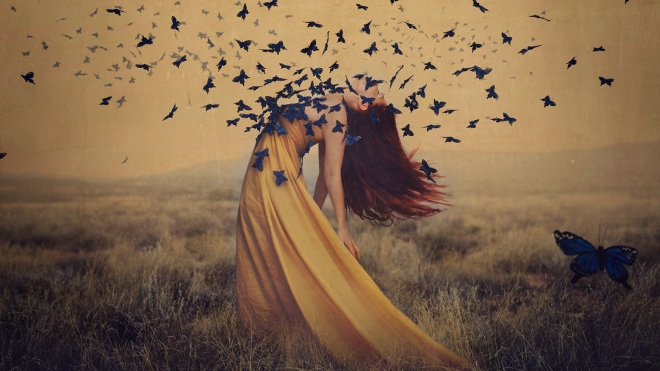
Documentary
This kind of photography has to be accurate and straightforward representation. This type can be based on many things such as people, places, objects and events. Documentary photography is actually really different to photojournalism as even though they are showing their depth of truth, photojournalism is more of telling a story and documentary is plain and simple and actually real. Photographs are meant to accurately capture unknown, hidden, forbidden, or difficult to access places and circumstances.
Documentary photography can be used in:
- Books– mainly for non- fictional books
- Magazines/e-magzines– such as National Geographic or Travel Magazines
- Newspaper– visually see what news they are producing
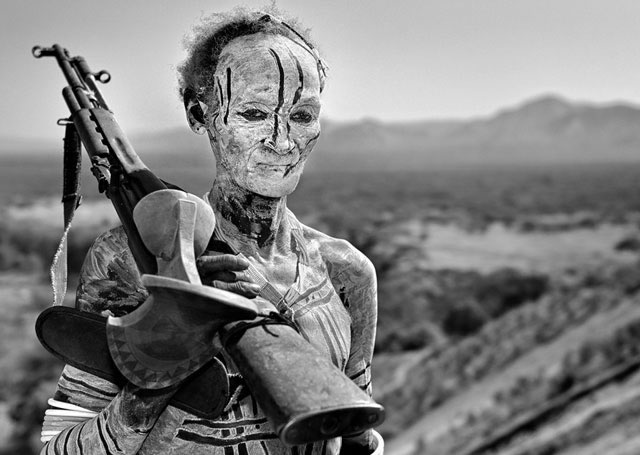
Further Uses and Purposes
Here are some further ways that digital photography can be used within its applications
Magazines and E-Magazines:
- Covers– Digital photography works well for the cover all magazines is that it captures the attention of people by their use of colour, or perhaps the person they use such as a famous celebrity, making it more intriguing or compelling. Covers are designed to attract and compelling people to want to buy it and therefore increase sales. If it didn’t have any photography it wouldn’t be as interesting or exciting because the cover is the most important part for magazines/e-magazines and if it doesn’t attract anyone it will not get picked. Heres an example on the photo captioned ‘Cover’. By the way they have used a plain blue background and then having the model full of colour and their use of image manipulation grabs our attention.
- Events– Photography really helps gets people interested into the event by seeing what will happen their as they can visually see it.
- Paparazzi– This is where professional photographers take photos of high-profiled people, often without their permission to sell them to newspapers and magazines to give a snapshot of their private lives to the public. This kind of photography as invasive as it may be people love it and when they see these kinds of photos especially in magazines.
Magazines (and also newspapers) use photography to tell a story so from what you visualise to see what kind of story or statement its saying. This is where photojournalism documentary photography comes into play. Photography is also really good for promoting different kinds of campaigns such as charity, road safety and public health as again to visualise what it is and input into the campaign.
Newspapers and E-newspapers:
- Front page– again just like with Magazines/e-magazines they like to make it engaging but not in the same way as they use intriguing stories and of course by adding photography.
- Editoral– An editorial is a leading article or leader,an article written by the senior editorial staff
- Celeb stories– again just like paparazzi
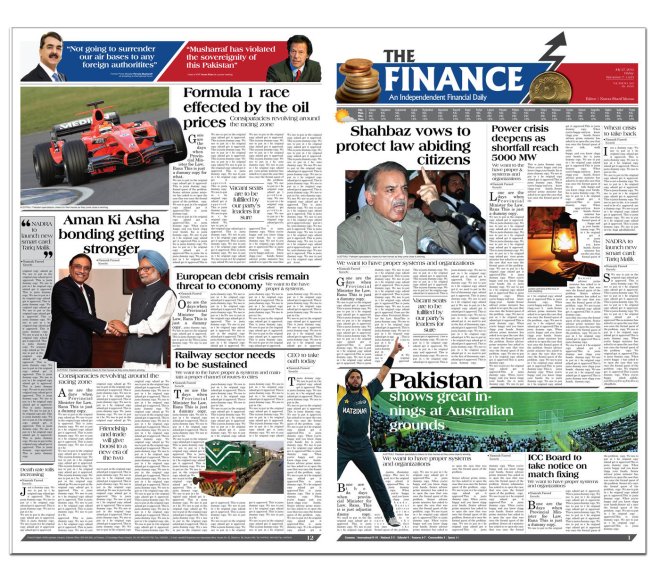
news papers tend to use photography to reinforce the written word so usually there will be a caption in bold (as you can see from the newspaper above) and then a photo by it as almost proof that it actually happened. This is called ‘Anchoring Written Publications‘
Boardings and Billboards:
- Advertising– having something big and simple to avert your eyes for just a split second
- This also a good way in marketing in a broader perspective as loads of people can see it while driving or walking past, but another simple way which would be good for marketing is in style of posters, leaflets and adverts that can be smaller and given out to individual customers or the public, or displayed in shops, community buildings, and other public venues.

Books
Even though books are all about what is written inside, it doesn’t mean that digital photography has no part to play. Like I said before photography is about capturing a moment and then capturing peoples attention, and with books if their cover isn’t getting any attention then it won’t get bought, so digital photography has the part to intrigue the people. it can also reinforce a well known writer, for example Jack Higgins or JR Tolken or brand such as Mills and Boon.

For example what we see is a book cover which has used digital photography and you can see by their use of colours you can already see a particular target audience being attracted to this are women.
Web Pages/ Interactive Publications
Photography is extremely important as people are visual and will usually look first and then analyse the content later . ‘our brains store images in our long-term memory whereas text is stored in our short-term memory’
As a website has only got a split second to make a good impression so enhancing digital photography makes the website what it is.
Interactive Publications is the common gateway interface (CGI) which is a standard way of web server to pass a web user’s.
As you can see from this photo below their use of imagery is immediately court your attention making this website interesting.

Websites are also really good for promotional work as its just a click a way from any sort of advertising from an interactive screen.
Galleries/ Individual clients
this is where you show more of your creative and artistic side of digital photography, so in galleries its to show that visual art and what statement or purpose do you want from these artistic approach and what is it trying to portray.
What you see in the picture below is a gallery for photography. It’s not trying to advertise something or get you interested into a book/magazine its all based purely on what has been captured and people who view that will be intrigued mainly on what the meaning is behind it or the type of skill that was put into it.

Individual cilents have a similar approach but its less about the purpose of the photo and more about client and what they would like. This kind of photography is good for all people have a professional photo captured at a certain time in their life and keep it forever examples of these would be like their wedding day, their children or portraits of themselves.
Digital Photography Equipment
There are many ways in which you can use digital photography such as listed below:
Manual camera is the main setting on your camera and it lets you manually control shutter speed, aperture and ISO, specifically on DSLR camera’s as they capture their images digitally, as opposed to SLR which uses film made of plastic, gelatin and other material to record the image.

An automatic camera on DSLR (digital single-lens reflex) and its where the lens aperture or the shutter speed or both are automatically adjusted to the prevailing condition. Automatic is good because it takes care of everything for you. DSLR means that inside a camera is a mirror that reflects the light coming from the lens and sends it through up to the optical viewfinder, this allows photographers see what they are shooting.

Another form of digital equipment would be the use of your smartphone camera which is a hand-held device.
An old fashioned hand-hold device would be a plate camera which is a large point and shoot format camera and are more defined by the type of film they already used rather than the cameras itself. ‘plate’ refers to the photographic that is used to take the image.

Medium format cameras traditionally is referred to the film format in still photography. it also refers to either the cameras adapted from medium-format film photography uses or to cameras making use of sensors larger than a 35 mm film frame.

Light- weight cameras offer a great image quality but lighter to carry, great for traveling.

Extreme sport cameras are simple but effective as and are able to withstand a lot of things which a normal camera couldn’t. An example would be a @GoPro which doesn’t need to be hand held and can be strapped onto your head, enabling you to concentrate on your sport/activity while also having it filmed.

Recording – This has two different kinds Standard definition (SD) and High Definition (HD)
In these two photos below we see visually the differences between SD and HD
Standard Definition (left photo) is a television system which uses resolution which isn’t has enhanced as HD.
High Definition (right photo) is much more detailed picture quality and is delivered a lot clearer than SD.
Camera Components
Camera Components:
- Viewfinder– This is what the photographer looks through to compose and focus the picture. Most of them are found to be separate while other cameras have a single-lens reflex and use it as their optical view system.
- Digital shutter system– Described to be the curtain in front of the camera sensor that stays closed until the camera fires. Once it has, the shutter opens and fully exposes the camera sensor to the light that passes through the lens aperture.
- Lens– is a optical lens or assembly of lenses used in union with the camera body and to make the images of either photographic film or other media.
- Image sensors– This detects and conveys the information that creates an image
- Aperture– This is an opening through which light travels
- Memory– Stores all the cameras images and info and find you’ll get them on small cards to put in the camera all with a different capacity (some will have more memory than others)

Lighting
Lighting is key with any kind of photography. If you haven’t got the lighting right then the whole image will not be right so you need to think about that lighting.
Here is the kind of lighting all photographers should know:
Natural Light
This where its been Shot lit only with the sun’s light- no electric/artificial light involved.

In the photograph above, here you can see how they’ve used natural lighting to centre the women as the subject, as the light is only hitting her making her stand out.
Flash Light
Portable Flash- “speed lights”- enable you to put light where there isn’t any. portable flash guns are battery powered and can be fitted on top of the camera or used on a tripod or even hand-held.
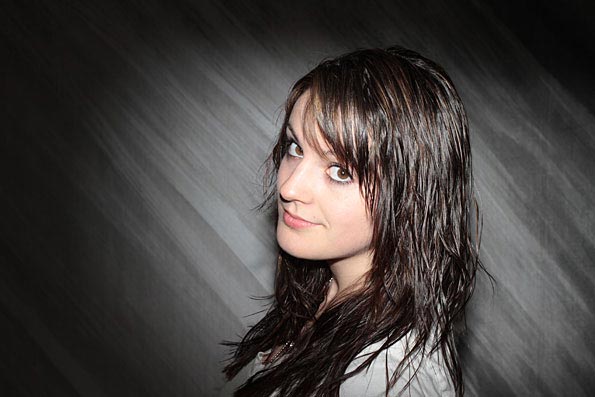
This kind of lighting is more intense than natural lighting and is good for studio photography.

The clear differences from what different kinds of lighting can do (soft-box are explained further bellow)

Studio Lighting
Studio flash or strobe- these are often used in conjunction with soft boxes
Soft boxes are exactly how they are written they are to soften the flash so it isn’t as intense and studio flash/strobe are lights photographers and it takes a quick burst of light to illuminate a scene.
Tungsten– continuous light (always on), better for videos and recording, however continuous light can help you visualise how you would like to capture it

LED– Light Emitting Diode- again mostly used for videos however can be used for photography and the best way is when its made of a panel and carries loads of small LED bulbs like from the picture bellow.
HMI-(Hydrargyrum Medium-Arc Iodide) is a type of light which uses an arc lamp instead of an incandescent bulb to produce light much closer to daylight.
HMI light are high-quality and correspondingly expensive. They are popular with the film and television industry but their price puts them out of reach to the public

Reflectors– used to bounce or reflect light enabling photographers to reflect more light onto their models or objects and here on the right show how it is used
Colour temperature
This is usually recorded in kelvin degrees which is the unit of absolute temperature.
with cool colours like white and blue and the colour temperature tends to be between 5000K-12000K
Then with the warmer colour like red and yellows/orange temperature are between 1800K-4000K

Here is a chart that explains the colour temperature in Kelvin degrees

And then here is a natural version of the chart of the same photo with different colour temperature in Kelvin.
Camera Support
Camera support:
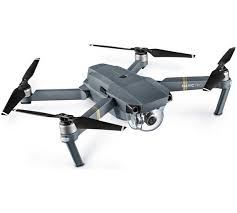
![yayay]](https://digitalphotography101853035785.wordpress.com/wp-content/uploads/2018/01/yayay.jpg?w=300&h=300)

HAND-HELD: This type of camera support is where you just hold it yourself
- SELFIE STICK- this hand-held device which carries a camera or smart phone, this enables them to take pictures of themselves with a wider angle.
- CAMERA STABLISER- this is designed to hold a camera in a way which stops unwanted camera movement known as the ‘camera shakes’
Exposure
Exposure in photography determines how light or dark an image will appear when its been captured by a camera
Light= wavelength – different colours have different wavelengths types:
- Over exposed- this is where an image/photograph has too much light creating an bright image
- Correct exposure- this is where the exposure has an equal balance of light and dark
- Under exposed- the image being having. very little light and therefore a dark image
examples here:
AN OVEREXPOSED IMAGE:

here we can only just about see the man on his bike, but with it being over exposed we cannot see much else.
CORRECT EXPOSURE:

looking closely at this picture we see a good exposure throughout the image.
UNDER EXPOSED:

with this photo being so underexposed it causes a strain on the eyes as you have to really focus what is in this image otherwise you cannot see, because it is so dark.
SEEING THESE EXPOSURES IN THE SAME IMAGE:

Shutter speed is the length of time that the film or digital sensor inside the camera is exposed to light
Shutter speed is measured in seconds for example 1/150 or 1/4000 you can use it in a way to understand how motion works:

LONG SHUTTER SPEED:

FAST SHUTTER SPEED:

Digital cameras use a sensor:
- CCD- simple movement, its a charge coupled device for the movement of electrical charge.
- CMOS- much less power, parallel processing allows faster shutter rolling shutter- fast readout

Auto-exposure bracketing
Most digital cameras have an auto-exposure bracketing (AEB) option. as seen in the photo below

When it is selected, the camera automatically takes three more photos, each of them having a different exposure. This can be really useful if you’re capturing high contrast scenes for HDR.
HDR
This means High Dynamic Range which is basically the difference between the lightest light and darkest dark in which you capture in a photo. Its really difficult to capture a photo with the exposure being both ends of the spectrum, however with HDR that allows this all to happen in one photograph.

Image Manipulation
Image Manipulation
This involves transforming or altering a photograph using various types of methods and techniques to achieve the result to which the photographer desires. This includes removing unwanted material, resize materials, converting and/or compressing files. 
Adobe Photoshop is one of the best programmes for image manipulation. Its a raster graphics editor (computer Program)

REMOVING UNWANTED IMAGES: Image manipulation is able to digitally transform unwanted images into something that couldn’t be physically captured in real life by editing the original image. This manipulation technique is used extensively in advertising, celebrity and fashion photography.

For example here above you see a two of the same photo of the celebrity Harry Styles, but one (left) of them as not been edited and the other (right) has been edited.
The differences are:
Left:
- we see a lot of spots and blemishes
- pale white skin
- wrinkles
- dark circles round harry’s eyes
- messy hair
- chapped lips
Right:
- we see how his whole face has been smoothed out
- his skin is a bit more tanned
- we don’t see many dents in his facial structure
- harry looks a lot brighter not tired
- hairs still a bit messy but not as bad as it was before
- lips are redder and not as chapped
Just from them those two photos we can see the power on how you can change just a standard photo into a professional one.
Other ways to use image manipulation may be to apply filters like different tones and textures through the increasing and decreasing contrasts, saturation and colour or cutting out parts certain parts of an image and maybe putting it back together or replacing it with creative patterns or layering images. see how this has been achieved in the example above.
Resizing images:
when editing a photo its important to understand how to resize an image, this is because when a image is resized its pixel information is changed. for example if a image is enlarged then the editor has to create and add in new pixel information, however when its being reduced in size unneeded pixel information can be discarded.
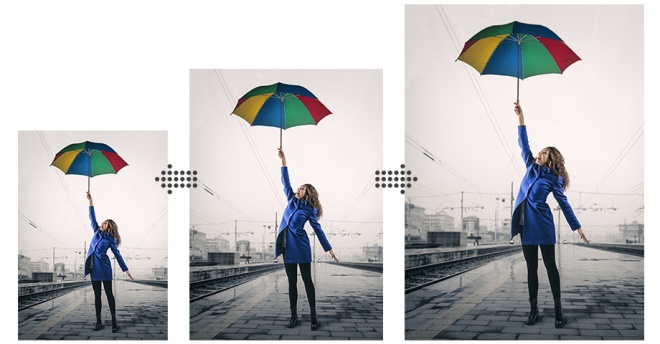
Converting files: This means changing from one file type to another. it can be necessary to convert the digital photograph into a different format in order too insert it or use it in a particular programme such as; text, database, graphics and spreadsheets.
Compressing files: To find out information about this go to Exporting and storing files section.
Exporting and Storing Files
This is probably the most boring aspect of digital photography but doesn’t mean its not important.
First things first, file transfer which is key, especially if you want to move your photos or files from your digital device to a hard drive or perhaps cloud storage. File transfer is basically the movement of one or more pieces of data from one spot to another, for example, a collection of electronically-stored files which can be moved physically from devices such a camera where there is limited capacity to store information, to a computer hard disk, or files that can be sent remotely over a telecommunication.
Through the internet The File Transfer Protocol (FTP) is the most common way to transfer single files.

Next is file formatting which is a standard way that information is encoded for storage in a computer file and it specifies how bits are used to encode information in a digital storage.
The main three are:
- JPEG– (Joint Photographic Experts Group) a format for compressing image files so that they remain intact but take up less memory space.
- RAW– An unprocessed photograph that takes up more space than a JPEG
- TIF– (Tagged image Format File) an image format file for high quality graphics
File Compression is a process of reducing a file so it wouldn’t take up as much disk space. this might involve reducing the file type, resolution, dimensions or bit depth of a photograph or image file. Compression formats can also allow you to take many files and compress them into one file.
A well known file compression format for images in digital photography is Lossy and Lossless.
Lossy compression is a class of data encoding methods that uses inexact approximations and partial data discarding to represent the content. with lossy compression, the data is permanently removed.
Lossless compression is a data compression algorithm to which allows original data to be reconstructed from the compressed data. although the file data is compressed, the quality stays the same.
Types of compressed image files:
PNG – this is a type of lossless compression type. it is a high quality format that allows layers of graphics to be stored separately from each other.
JPEG – is a lossy format that offers a higher compression rate that PNG for digital camera images.

Storing:
Hard Drive: This is used to store data and houses the hard disk, where most of your files are located. Here in this picture below we see a physical picture of a hard disk drive. Hard drives, although not portable or flexible are the most robust way of storing information. Even when using portable devices, there should alway be a back up or original stored on your hard drive if possible.

Cloud Storage: In digital photography, as the files can be large, finding enough space to hold all of the captured data is a real challenge. Instead of storing information to a computer hard drive, data is stored to a remote database. The internet provides the connection between your computer and the database, which means that the data can be shared across multiple devices i.e. phone, laptop and other devices. as well as being able to access your data via the internet on more than one device, and not having to physically carry your data around in heavy hard drives, cloud storage also has the advantage of allowing your data to be shared with other people. some of the more popular Cloud storage sites for digital photographs are Flickr and Picasa which have the capacity to hold thousands of photographs in albums created by the client in their own personal and passwords space. Care has to be taken however with cloud storage, for example who owns your images, the site owner or you? Make sure you work this out before choosing one by reading the terms and conditions.
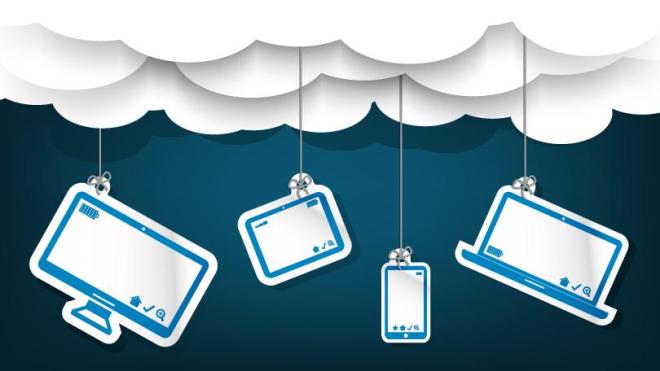
External Devices: These are physical portable devices where you can store and transport digital information and data. Examples of these would something like a Memory stick/USB (photo on the left) which is a small removable memory device which helps people carry files in one place so they won’t loose it. You can also get external portable hard drives (photo in the centre), which is the same as a normal hard drive except it can move and plug into a USB, FireWire or eSATA port on a computer. Finally files can be placed on a CD (photo on the right) and can be portably moved that way. although portable devices are convenient for transporting data, disks can be prone to scratches and USBs can break so care needs to be taken when carrying them. it is also vital to back up information by keeping originals on a static hard drive in case of damage or loss of your external device.
HELPFUL WEBSITES
Applications and uses of digital Photography:
Advertising 15/02/2018
Fashion 15/02/2018
Photojournalism 01/02/2018
Portraiture 01/02/2018
Studio-based work- no website used
Architectural 05/02/2018
Medical 05/02/2018
Fine Art 25/02/2018
Documentary 25/02/2018
Web Pages 26/02/2018
Digital Equipment:
Manual cameras 10/02/2018
Automatic Cameras 25/02/2018
automatic Cameras 23/02/2018
hand-held devices- no website used
Medium Format Cameras 03/02/2018
Lightweight cameras- no website used
Extreme Sports Cameras 03/02/2018
recording still and high definition video 25/02/2018
SD/HD 25/02/2018
Camera Components:
Viewfinder 10/02/2018
Digital Shutter system 10/02/2018
Lens 10/02/2018
Image sensor 10/02/2018
Aperture 10/02/2018
Shutter10/02/2018
Memory 10/02/2018
File storage 10/02/2018
Lighting:
Flash 18/02/2018
Studio lighting 18/02/2018
natural Light 18/02/2018
Colour temperature 25/02/2018
Camera support:
Tripod- no website used
Monopod- no website used
Hand-held:
selfie stick27/02/2018
Drone- no website used
Exposure:
Correct Exposure 20/02/2018
Underexposed 20/02/2018
overexposed 20/02/2018
auto-exposure bracketing 25/02/2018
HDR 25/02/2018
Image Manipulation:
Remove unwanted Material/26/02/2018
resize images 27/02/2018
Convert Files- no website used
Compress files 26/02/2018
Exporting and storing of files:
file transfer 15/02/2018
file formating 15/02/2018
file compression 26/02/2018
lossless 25/02/2018
storing:
cloud storage25/02/2018
external devices:





































